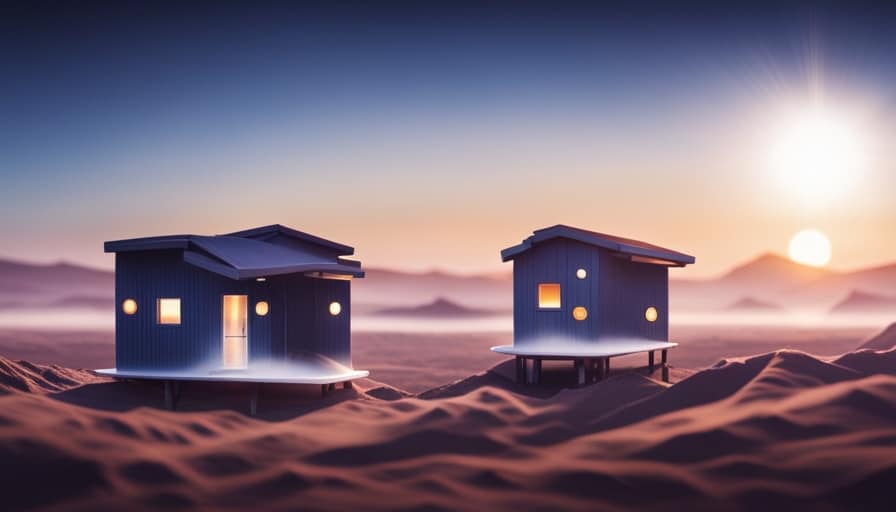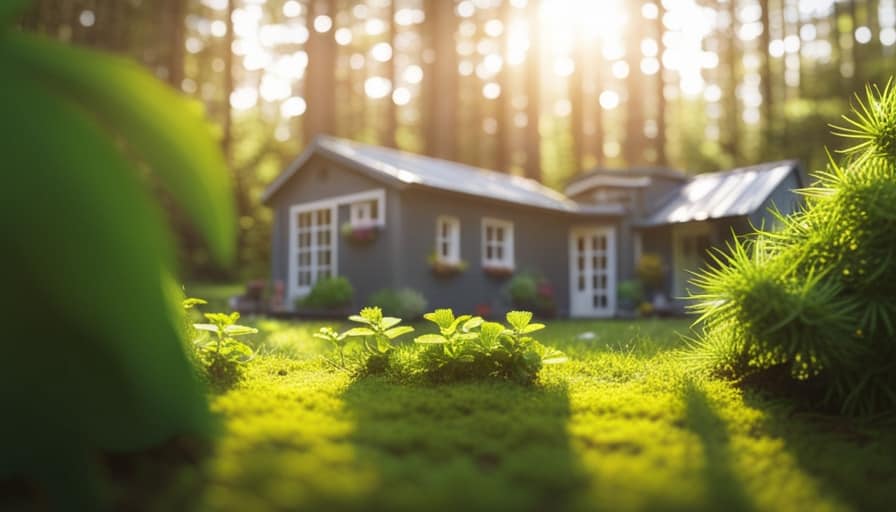At Entrepreneurial Living, we see the act of creating small havens as equivalent to building our own personal retreats. This article delves into a do-it-yourself method for constructing tiny houses, complete with valuable advice to assist you in realizing your ideal home.
From the importance of sturdy foundations to effective weatherproofing techniques, we’ll cover it all.
Join us as we delve into the world of sustainable living, resource management, and cost-effective strategies for constructing your own pocket-sized haven. Let’s embark on this exciting journey together.
Key Takeaways
- DIY tiny house building offers the freedom to customize the space according to personal needs and preferences.
- Foundations are crucial for stability and longevity of any structure, and regular maintenance and inspections are important to prevent issues.
- Weatherproofing and insulating techniques, such as sealant application and insulated panels, are essential for creating a functional and energy-efficient home.
- Exploring off-grid options, like alternative energy sources and sustainable practices, promotes a more sustainable and self-sufficient lifestyle.
The DIY Approach to Tiny House Building
We’re going to explore the DIY approach to building tiny houses.
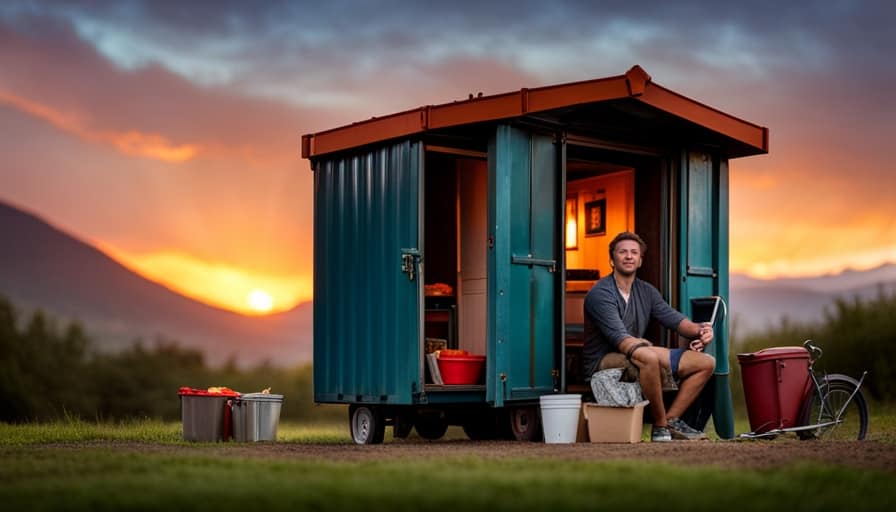
When it comes to tiny house design, the possibilities are endless. The beauty of taking the DIY route is that you have the freedom to create a space that perfectly suits your needs and preferences. From clever storage solutions to innovative layouts, you can truly make the most of every square inch.
Creative storage solutions are key in tiny house living, as maximizing space is essential. Utilizing hidden storage compartments, multipurpose furniture, and vertical shelving can help you make the most of limited square footage.
With a DIY mindset, you can create a functional and stylish tiny home that reflects your unique personality and lifestyle.
The Importance and Types of Foundations
Foundations are crucial for the stability and longevity of any structure, including pocket-sized havens, and understanding the different types can help us make informed decisions during the construction process.

When it comes to foundation materials, there are various options available, such as concrete, stone, and wood. Each material has its own strengths and weaknesses, so it’s important to choose one that suits our specific needs and budget.
Additionally, foundation maintenance plays a vital role in ensuring the durability of our pocket-sized havens. Regular inspections and repairs can prevent issues like cracks and water damage, extending the lifespan of our foundations. By investing time and effort into proper foundation care, we can create a solid base for our pocket-sized havens.
As we move on to the next section about weatherproofing and insulating techniques, let’s explore how these elements work together to create a comfortable and sustainable living space.
Weatherproofing and Insulating Techniques
Let’s start by exploring the importance of weatherproofing and insulating techniques in creating a comfortable and sustainable living space for our pocket-sized havens.
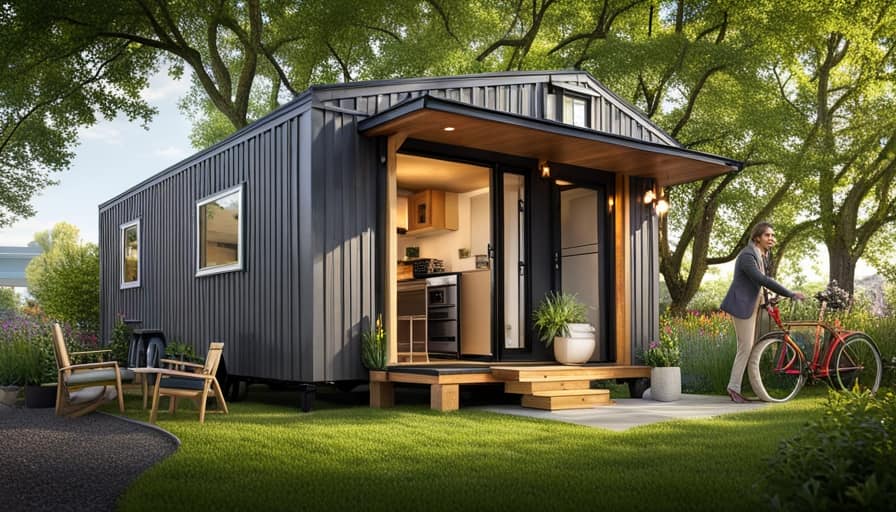
When it comes to weatherproofing techniques, there are several options to consider:
- Sealant application: Applying sealant to windows, doors, and gaps can prevent drafts and water leakage.
- Weatherstripping: Using weatherstrips around doors and windows can further prevent drafts and improve energy efficiency.
- Insulated panels: Installing insulated panels on the walls, roof, and floor can provide better insulation and temperature control.
- Double-glazed windows: Opting for double-glazed windows can improve thermal insulation and reduce heat loss.
In terms of insulation methods, here are a few options worth exploring:
- Spray foam insulation: Spray foam can be applied to walls, ceilings, and floors to provide effective insulation.
- Insulated curtains: Hanging insulated curtains can help regulate temperatures and reduce heat transfer.
- Reflective insulation: Installing reflective insulation in the attic or crawl spaces can prevent heat absorption.
- Natural insulation materials: Using materials like wool, cork, or straw can provide sustainable and eco-friendly insulation.
Exploring Off-Grid Options for Sustainable Living
There are many off-grid options available for us to explore in order to achieve sustainable living in our pocket-sized havens. Off-grid communities offer a unique opportunity to live in harmony with nature while reducing our environmental impact.
These communities often rely on alternative energy sources such as solar panels, wind turbines, and hydroelectric systems to generate their own power. By embracing these alternative energy sources, we can reduce our reliance on fossil fuels and contribute to a cleaner, greener future.
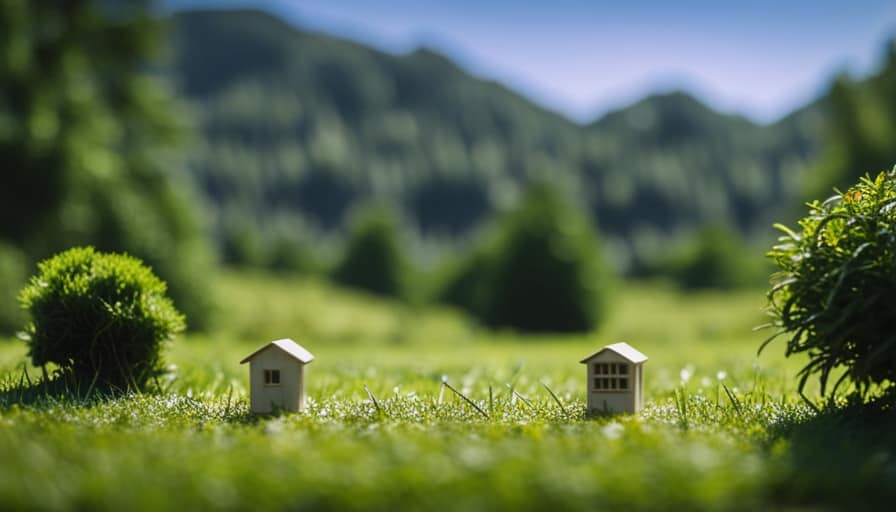
Additionally, off-grid communities encourage self-sufficiency through practices like rainwater harvesting, composting, and organic gardening. These practices not only minimize waste but also promote a healthier and more sustainable lifestyle.
By embracing off-grid options and alternative energy sources, we can create a more sustainable future for ourselves and future generations.
Speaking of sustainability, let’s now explore resource management in a tiny living setting.
Resource Management in a Tiny Living Setting
When it comes to living in a tiny space, resource management becomes essential. We need to find ways to optimize our limited space and make the most of every inch.
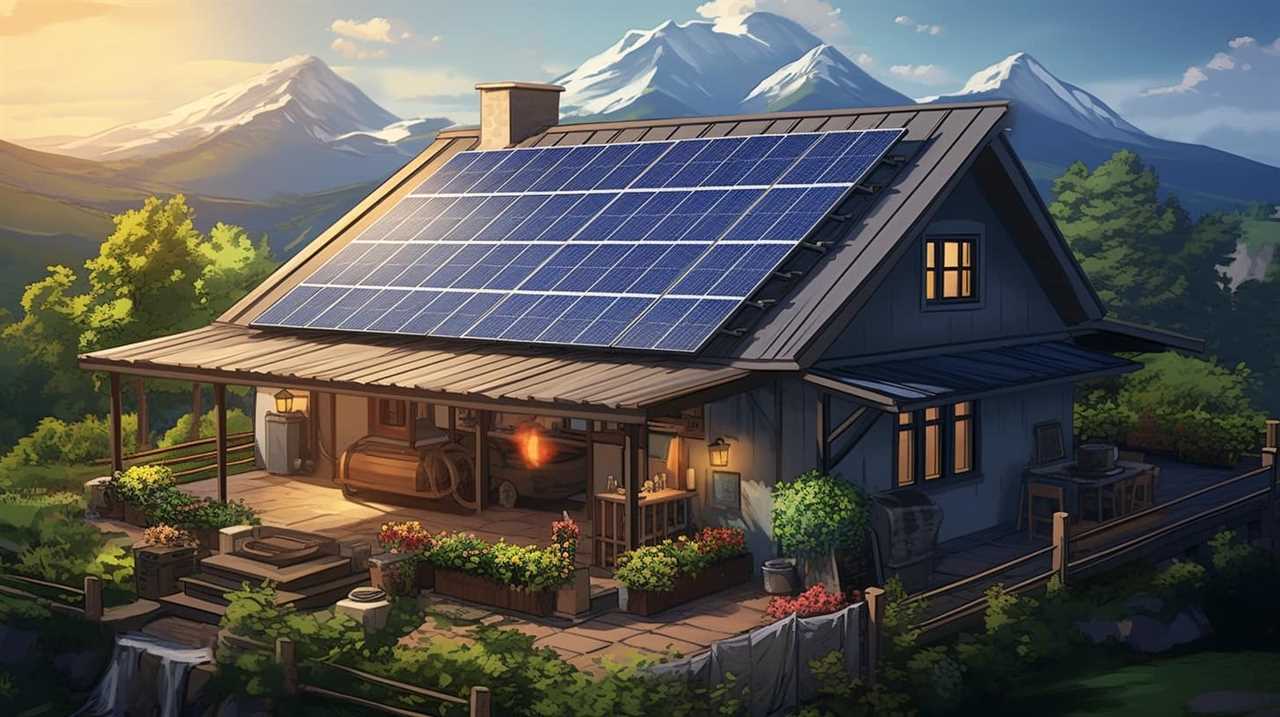
Additionally, sustainable resource consumption is crucial in order to minimize waste and reduce our ecological footprint. Let’s explore some space optimization techniques and sustainable practices that can help us thrive in our pocket-sized havens.
Space Optimization Techniques
We love implementing space optimization techniques to maximize resource management in our tiny living setting. Living in a small space doesn’t mean compromising on comfort or functionality. Here are some creative solutions we’ve found:
-
Space-saving furniture: Investing in multi-functional furniture pieces, like a sofa that turns into a bed or a dining table that folds down against the wall, can save a lot of space.
-
Vertical storage: Utilizing wall space with shelves, hooks, and hanging organizers can help keep your belongings off the floor and create a more organized living area.

-
Hidden storage: Look for furniture with hidden compartments, such as ottomans with storage space inside or beds with built-in drawers underneath.
-
Utilizing nooks and crannies: Make use of every available space by using storage containers that fit into awkward corners or under staircases.
Sustainable Resource Consumption
As responsible homeowners, we consistently strive to manage our resources sustainably in our tiny living setting. This includes implementing renewable energy sources and minimizing waste to achieve a zero waste lifestyle.
By harnessing the power of the sun through solar panels, we can generate clean and renewable energy to power our tiny homes.

Additionally, we’re committed to reducing waste by practicing recycling, composting, and reusing materials whenever possible. This not only helps us minimize our environmental impact but also allows us to save money in the long run.
We believe that sustainable resource consumption isn’t only beneficial for our own well-being but also for the planet as a whole.
Transitioning into the subsequent section, let’s explore cost-effective strategies for constructing tiny houses.
Cost-Effective Strategies for Tiny House Construction
Building a tiny house on a budget requires careful planning and resourcefulness. To help you save costs and create an eco-friendly living space, here are some cost-saving tips and suggestions for using eco-friendly materials:
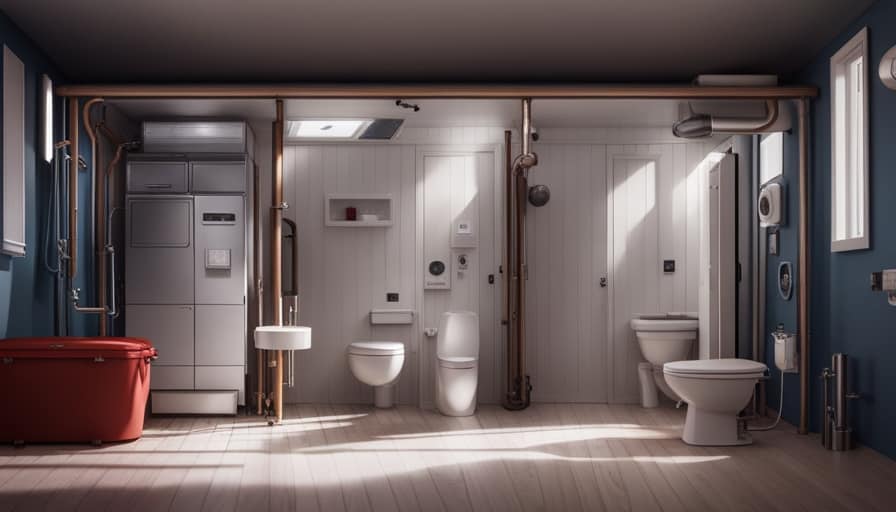
- Reuse and repurpose: Look for salvaged materials like reclaimed wood, windows, and doors to save money and reduce waste.
- Opt for energy-efficient alternatives: Choose energy-efficient appliances and fixtures to reduce your energy consumption and save on utility bills.
- Consider alternative building methods: Explore alternative construction methods like using shipping containers or straw bales, which can be cost-effective and environmentally friendly.
- DIY as much as possible: Take on as many tasks as you can yourself, such as painting, flooring, and landscaping, to save on labor costs.
Frequently Asked Questions
What Are Some Common Challenges Faced When Building a Tiny House?
When building a tiny house, some common challenges we face include obtaining building permits and navigating zoning regulations. These requirements can be time-consuming and may require us to make adjustments to our plans.
How Can I Ensure That My Tiny House Is Structurally Sound and Safe?
To ensure the structural integrity and safety of our tiny house, we prioritize thorough planning, diligent research, and proper construction techniques. By following safety measures and consulting experts, we create a haven that is both secure and cozy.
What Are Some Innovative Off-Grid Options for Sustainable Living in a Tiny House?
Off-grid energy solutions and innovative space-saving designs offer sustainable living options in a tiny house. We can explore solar panels, wind turbines, composting toilets, and rainwater harvesting systems to minimize environmental impact and maximize self-sufficiency.
How Can I Effectively Manage Limited Resources in a Tiny Living Setting?
When it comes to managing limited resources in a tiny living setting, we’ve learned a thing or two. From maximizing storage to efficiently using space, we’ve mastered the art of making every inch count.

Are There Any Cost-Effective Strategies for Constructing a Tiny House?
Cost saving techniques for DIY construction of tiny houses include using recycled materials, sourcing affordable building supplies, and learning basic carpentry skills. These strategies help maximize resources and minimize expenses in creating your pocket-sized haven.
Conclusion
In conclusion, embracing a DIY approach to building and living in a pocket-sized haven offers a multitude of benefits.
From the freedom to design and customize your own space to the cost-effective strategies that can be employed, the possibilities are endless.
With a focus on foundations, weatherproofing, and off-grid options, it’s possible to create a sustainable and efficient living environment.
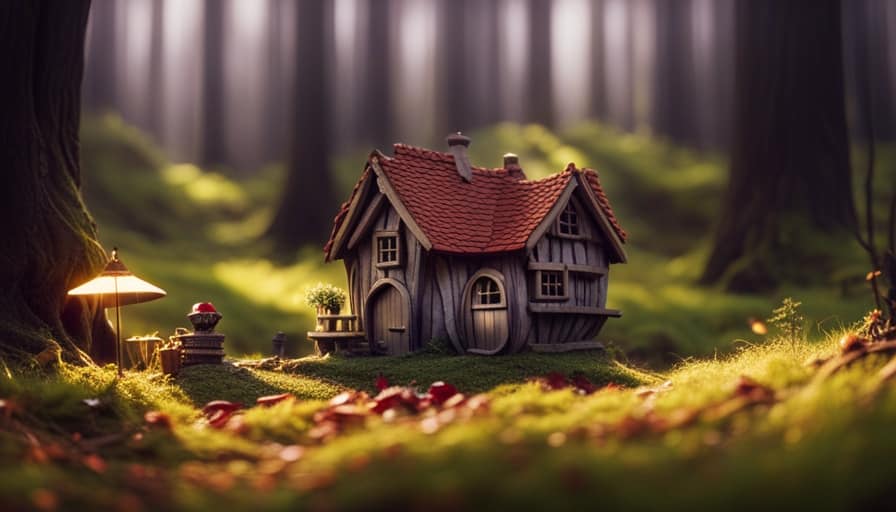
By effectively managing resources, individuals can create their own unique and comfortable tiny house, tailored to their specific needs and desires.
I’m Theodore, and I love tiny houses. In fact, I’m the author of Tiny House 43, a book about tiny houses that are also tree houses. I think they’re magical places where imaginations can run wild and adventures are just waiting to happen.
While tree houses are often associated with childhood, they can be the perfect adult retreat. They offer a cozy space to relax and unwind, surrounded by nature. And since they’re typically built on stilts or raised platforms, they offer stunning views that traditional homes simply can’t match.
If you’re looking for a unique and romantic getaway, a tree house tiny house might just be the perfect option.



